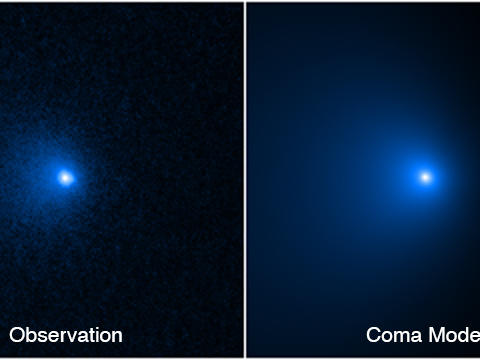Section Branding
Header Content
The Hubble telescope confirms the largest comet nucleus ever seen by astronomers
Primary Content
NASA's Hubble Space Telescope has confirmed the largest icy comet nucleus ever seen by scientists. The nucleus of comet C/2014 UN271 (Bernardinelli-Bernstein) is about 80 miles in diameter, which is larger than the state of Rhode Island, NASA says.
The comet's nucleus is about 50 times larger than that of most comets, and its mass is estimated to be a gigantic 500 trillion tons.
"This comet is literally the tip of the iceberg for many thousands of comets that are too faint to see in the more distant parts of the solar system," David Jewitt, a professor of planetary science and astronomy at the University of California, Los Angeles, said in a statement.
"We've always suspected this comet had to be big because it is so bright at such a large distance. Now we confirm it is," Jewitt added.
Comet C/2014 UN271 was discovered by astronomers Pedro Bernardinelli and Gary Bernstein using archival images from the Cerro Tololo Inter-American Observatory in Chile. The comet has been observed since 2010, when it was 3 billion miles away from the sun, and has been studied since then.
NASA says there was a challenge in measuring the comet's nucleus because it was too far away for the Hubble telescope to determine its size. Instead, scientists had to make a computer model that was adjusted to fit the images of the comet's bright light that they got from the telescope's data.
Despite traveling at 22,000 mph, the massive comet is still coming from the edge of the solar system. But NASA assures us that it will never get closer than 1 billion miles away from the sun — and even then, that won't be until 2031.
The previous record-holder for largest comet nucleus was discovered in 2002. Comet C/2002 VQ94 was approximately 60 miles across.
Copyright 2022 NPR. To see more, visit https://www.npr.org.

